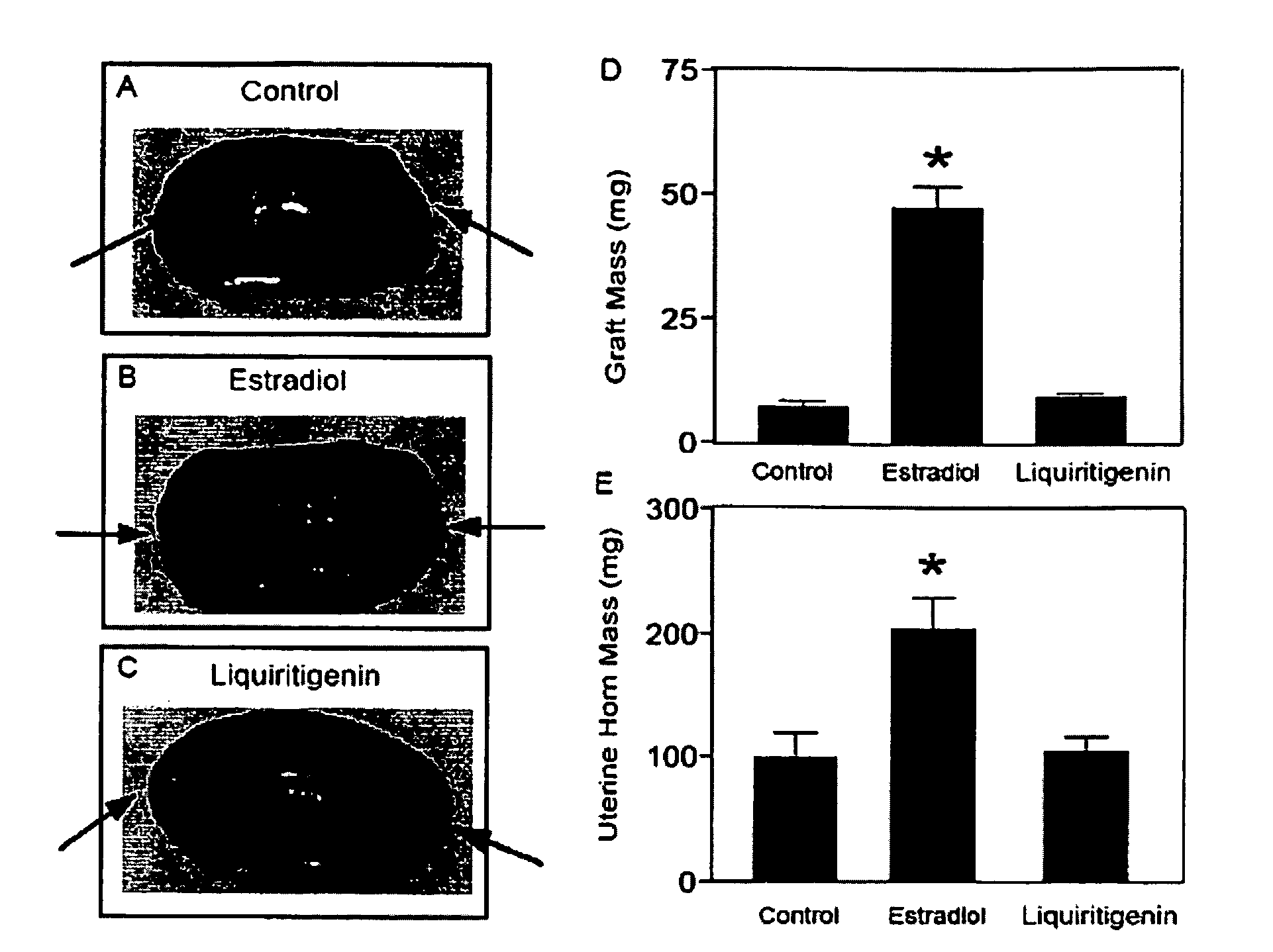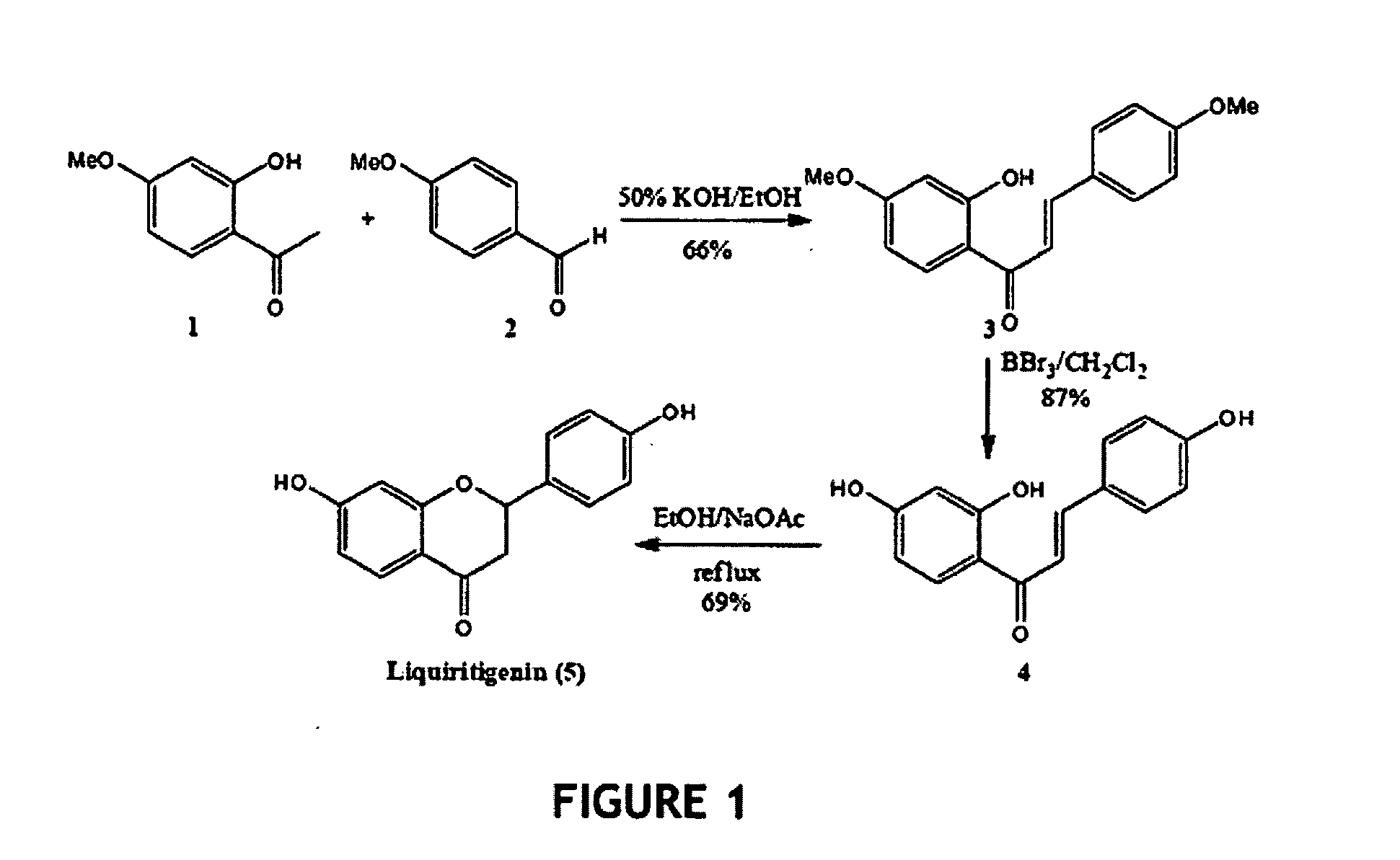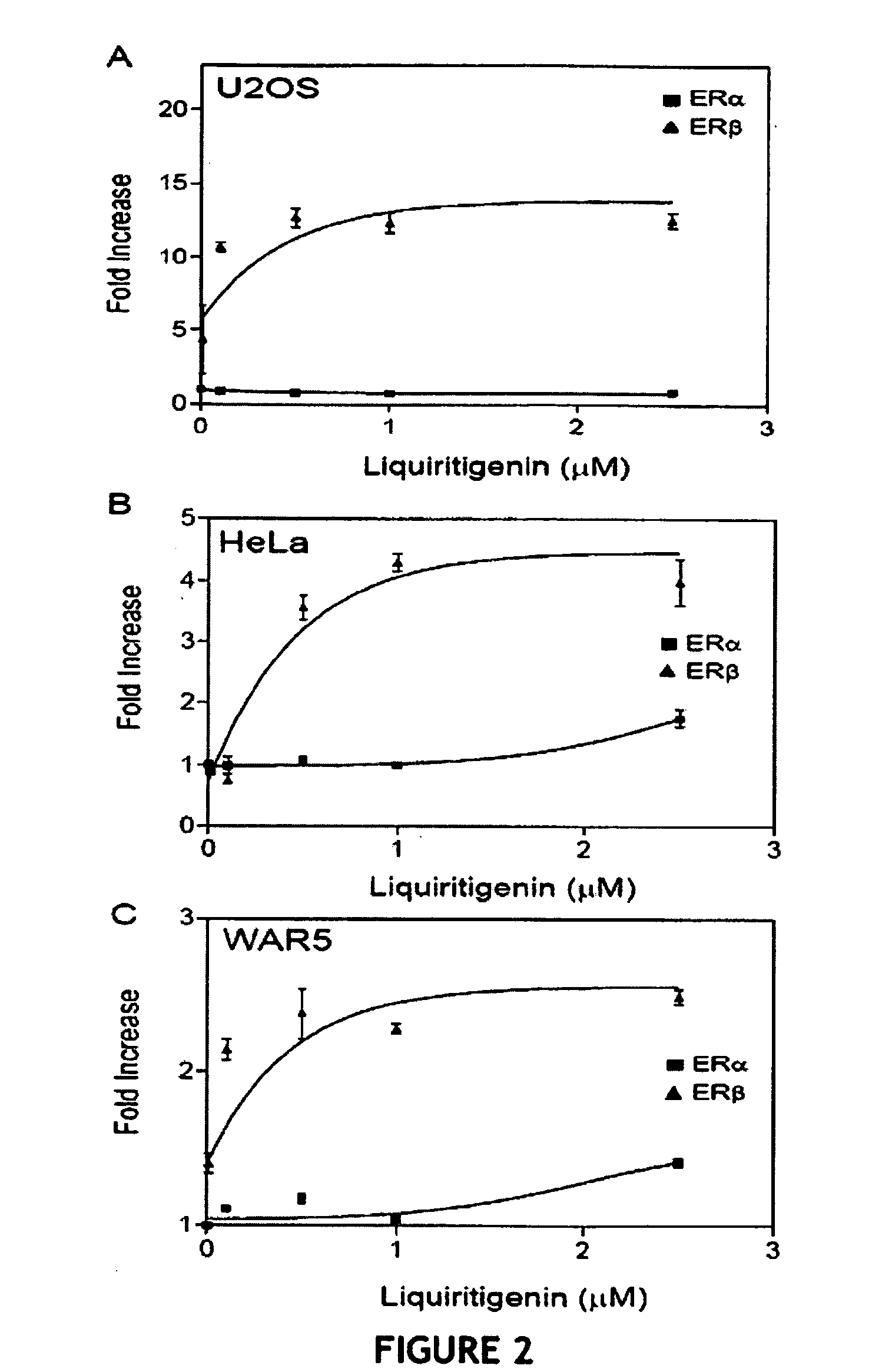Liquiritigenin and Derivatives as Selective Estrogen Receptor Beta Agonists
a technology of estrogen receptor and derivatives, applied in the field of liquiritigenin or derivatives, or prodrugs, can solve the problems of abrupt halting of the health initiative (wmi) study, increased risk of cardiovascular disease and osteoporosis, and undesirable effects
- Summary
- Abstract
- Description
- Claims
- Application Information
AI Technical Summary
Benefits of technology
Problems solved by technology
Method used
Image
Examples
example 1
Isolation and Structural Identification of Liquiritigenin from Glycyrrhiza uralensis
[0111]Dry, powdered G. uralensis roots, roots were extracted with 9:1 water-methanol (18 h, constant mixing) at a 10:1 solvent to mass ratio. The filtrate was recovered after suction filtration (Whatman #1 filter), concentrated by rotary evaporation to remove the methanol, and partitioned with an equal volume of ethyl acetate (repeated once). The combined ethyl acetate layers were dried with anhydrous sodium sulfate, concentrated to dryness by rotary evaporation in vacuo, and resuspended in a small volume of ethyl acetate. The sample was loaded onto a fritted glass column packed with silica gel (200-400 mesh, 60 Å) and eluted with a hexane / ethyl acetate gradient, starting with 100% hexane. Liquiritigenin eluted from the silica column with 60-80% ethyl acetate in hexane. The liquiritigenin fractions recovered off the silica column were further purified by preparative reverse phase HPLC (Delta 600 sys...
example 2
Synthesis and Characterization of Racemic Liquiritigenin
[0112]One synthetic scheme for synthesis of racemic liquiritigenin is shown in FIG. 1; synthetic steps and intermediate characterization are described in the following Examples 2a to 2c.
example 2a
2′-Hydroxy-4,4t-dimethoxychalone (3)
[0113]To a stirred solution of 2-hydroxy-4-methoxy acetophenone (1) (5.24 g, 31.5 mmol) and 4-methoxy benzaldehyde (2) (3.85 mL, 31.7 mmol) in absolute ethanol (100 mL) was added 80 mL of 50% aqueous KOH. The resulting mixture was stirred at room temperature for 48 h. The reaction mixture was acidified at 0° C. with 10% aqueous HCl and then extracted with Et2O (3×150 mL). The combined ethereal extracts were washed with brine, dried over anhydrous MgSO4, filtered, and concentrated. The resulting orange yellow solid residue was purified via column chromatography on silica gel (elution with hexane-EtOAc, 8:2) to give an orange yellow solid 5.91 g (20.8 mmol) of 3 (66%). 1H NMR (CDCl3); δ 3.86 (6H, s), 6.50 (2H, d, J=10.4 Hz), 6.95 (2H, d, J=8.8 Hz), 7.48 (1H, d, J=15.6 Hz), 7.62 (2H, d, J=9.2 Hz), 7.84 (1H, d, J=9.2 Hz), 7.88 (1H, d, J=15.2 Hz); 13C NMR (CDCl3): δ 55.67, 55.81, 101.27, 107.85, 114.37, 114.69, 118.04, 127.75, 130.59, 131.34, 144.50, 1...
PUM
| Property | Measurement | Unit |
|---|---|---|
| flow rate | aaaaa | aaaaa |
| temperature | aaaaa | aaaaa |
| temperature | aaaaa | aaaaa |
Abstract
Description
Claims
Application Information
 Login to View More
Login to View More - R&D
- Intellectual Property
- Life Sciences
- Materials
- Tech Scout
- Unparalleled Data Quality
- Higher Quality Content
- 60% Fewer Hallucinations
Browse by: Latest US Patents, China's latest patents, Technical Efficacy Thesaurus, Application Domain, Technology Topic, Popular Technical Reports.
© 2025 PatSnap. All rights reserved.Legal|Privacy policy|Modern Slavery Act Transparency Statement|Sitemap|About US| Contact US: help@patsnap.com



